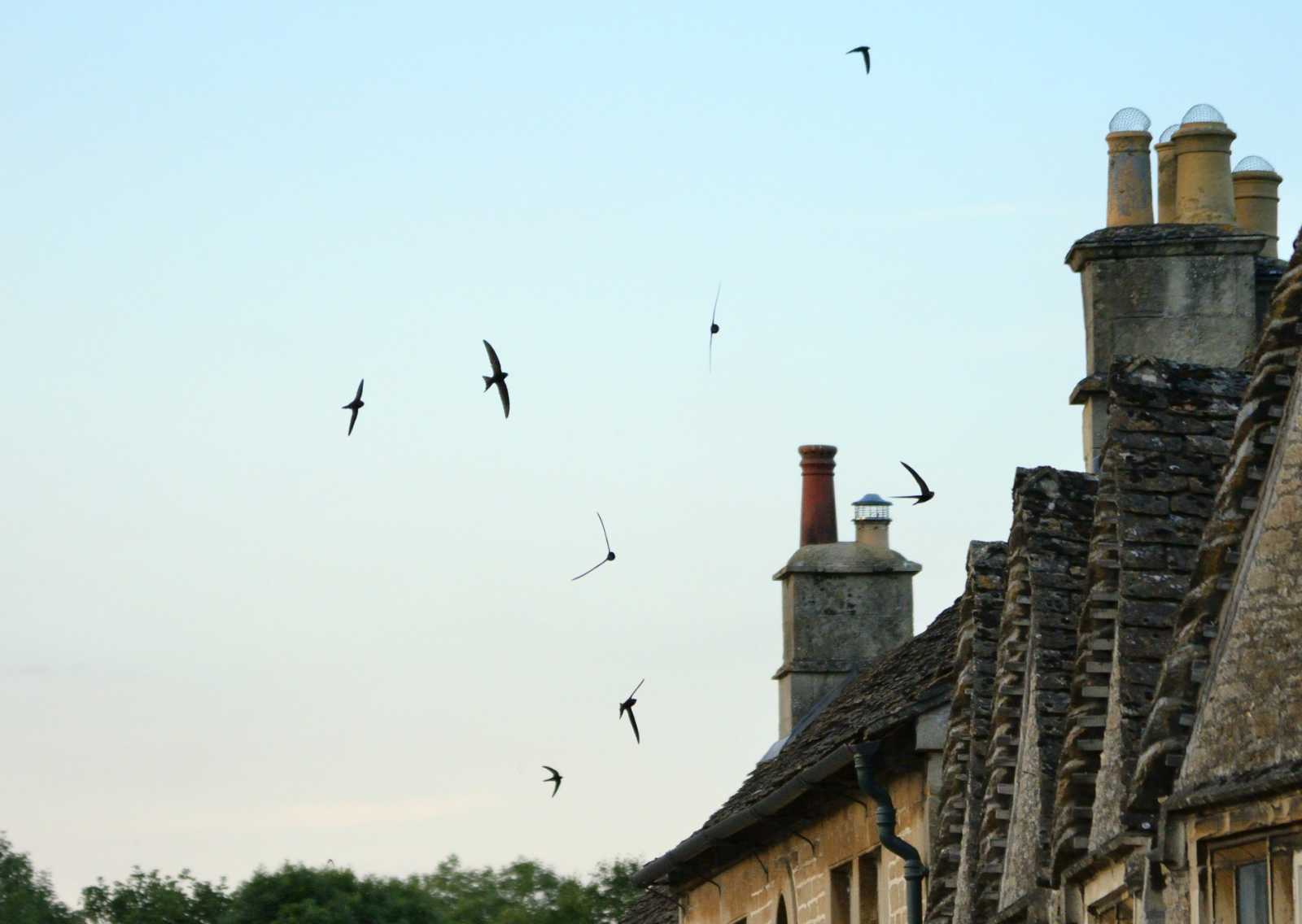Of all the sounds of summer, screaming may not be the first that comes to mind – but eager ears across the county have been straining to hear exactly this. It’s the sound of returning Swifts, remarkable little birds that fly here for the summer and stay just long enough to rear a family before heading back to Africa in August. The joyous screaming of a party of Swifts as they scythe through the air and swoop over rooftops is always eagerly anticipated and first heard with a sense of real excitement and relief – they’ve made it, they’re back!
Their yearly migration of 14,000 miles is one of the longest in the world but their exact routes remained a mystery until recently, when it became possible to tag and track individual birds. This revealed some truly amazing feats, with one Swift travelling 3,000 miles in just five days to complete a non-stop flight over the Sahara and into Europe, all with apparent ease. These birds are so at home in the air that they rarely ever land. They can eat, drink, mate and even sleep on the wing and will only come down to earth for the necessity of nesting.
Swifts pair for life and return just as faithfully to the same nest sites each year. Some colonies date back decades or even centuries, used year after year by successive generations. Youngsters don’t breed until they are four years old, and the lucky ones will live long enough to see a further six summers, so every nesting season really does count.
Swifts once nested in caves, cliffs and tree holes but have since adapted to live among us, making the most of our towns and cities to nest as high as possible under the eaves, gables and roof tiles of houses, barns and churches. Tragically though, suitable nest sites are now in short supply. Many are lost to renovations and repairs as old buildings are re-roofed and soffits replaced, while new-builds rarely provide the required nooks and crannies. This could spell disaster for the drastically declining British Swift population, which plummeted by 42% in a decade (2007-2017) and is now threatened with extinction.
Nest boxes can be installed high under the eaves on suitable buildings and special ‘Swift bricks’ incorporated into new-build homes, extensions or renovations. Equally vital is a plentiful supply of insect food to fuel their never-ending flight and bolster breeding success, and every park, garden and green space can play a part by creating wildlife-friendly habitats where flying insects can thrive. These relatively simple measures will keep Swifts screaming through our skies for years to come.
wildcall@sussexwt.org.uk
Charlotte Owen, WildCall Officer at the Sussex Wildlife Trust

Image Nick Upton, Sussex Wildlife Trust
